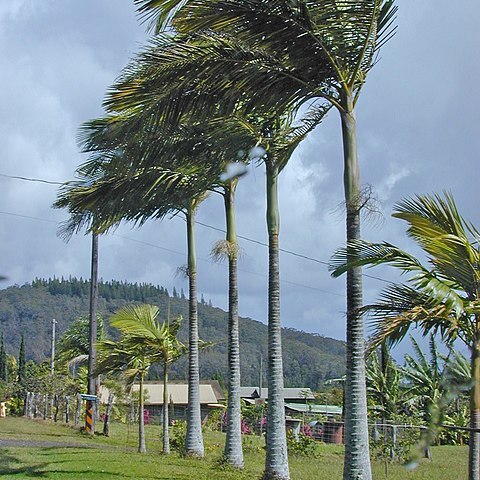Trunk to 30 m tall, to 30 cm diam. Leaves 10–12, to 4.5 m long, becoming vertically orientated; leaf sheath mid to lime green. Pinnae 60–80 each side of rachis, to 75 cm long, dark green adaxially, silver-grey abaxially; ramenta lacking. Inflorescence to 100 cm long, branched to 4 orders; axes white to creamy green; rachillae to 30 cm long, erect to semipendulous, moderately flexuose distally. Flowers widely spaced on rachilla; floral bracts raised with sharp margins; perianth white to cream. Staminate flower to 9.5 mm long; stamens 9–16; filaments curved; pistillode about equal to petals. Pistillate flower to 4 mm high. Fruit ovoid, 8–14 mm long, 6–11 mm wide; stigmatic remains apical; mesocarp fibres to 1 mm wide, flat, sparingly branched, remaining compact in the dried state. Seed globose, 8 mm diam.; raphe fibres weakly adherent.


